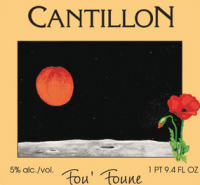
Gueuze makers on video: translation needed
Who knows Dutch? We got Jean Van Roy and Armand Debelder in the video above but I don’t know what they are saying. I don’t have the time or patience to go to Babelfish and translate the subtitles. Any help/summary?
Note: if you don’t see a video above, click the link below to view the video on the TVBrussel site.
via tvbrussel.be.
Breweries: Cantillon
“You like it, or you don’t…”
Got that part.
Got this from a friend in belgium.
“It’s a tradition; for every brew I’ll take with my jar the very first wort. Warm wort is our local tea, our local infusion.”
2011 is not only the year that journalist, specialized in beers, Jef van den Steen wrote his new book regarding geuze and cherry beer, but it was also the year of the reveille for the geuze… which is becoming a hit as the product of two co-operatives: the Lambik brewery and the Geuze co-operative. “I made a distinction between brewer and a geuze brewer “or cutter” (no specific translation given). In Here the five geuze brewers of this moment come to comments. Which is much more than back in 1993, when we were only with the two of us. At that time I was thinking about the little blacks.” “I am here – spicy statement eh – but I am here. I had to turn 60 first. And you can’t forget, I have spend my whole life between the jugs and the bottles.” “We have a very strange connection with our beers. Even for a Lambik brewer Lambik is mysterious. And that’s wonderful.”
“The future for the Lambik beers is looking great. The past few years, there has been a renewed interest for such a sourish beers. Also linked with the health mania. They are sugar free. And we all know that sugar is only good for obesity. So the future is looking bright at one perspective, there is a growth.” But Lambik is not yet a geuze which is assembled, like champagne is, and for that there is at least a very experienced taste pallet given. “I am a beer lover as well as a wine lover. But some are indeed very professional. There are specialists and I am not one of them.
We never produce the same beer, so we have to mix up these different beers. Not in order to make a standard beer- which is impossible, but in order to create a beer with the same base, the same touch; namely the ‘Cantillon Touch’. A beautiful sourishness. And less lactic acid, but with a hint of acetic acid. So a bit more of a cutting souerness, which is specific for Cantillon. Those cutting souerness of which you: ‘You like it or you don’t’. That is basically Cantillon. Something ‘to chew on’ for your mouth.”
“Because of the experience that I’ve got, it allowed us to higher our standards. We managed those higher standards and it resulted in bringing this on the market; an old geuze. I have named it ‘Armand 4’. We started off to make a selection of our best Lambik beers. You have to remember that there is Lambik in this bottle, brewed in 2006/2007 and 2008/2009. In 2010 it was bottled and now we are drinking it in 2011. So there is a whole history related to it. What is less than wine? Wine is harvest one year and the next it is already bottled and sold. Maybe already poored in wooden vats.”
Armand, geuze brewer of ‘de Drie Fontijnen’ takes high notice of his experienced taste buds and a lot of time and practice.
“I never write down anything. But the impact of the Lambik from the moment in touches your tongue, is already the moment that I know what I am going to do with it. I have smelled it, I have tasted it, but I haven’t swallowed it yet. That’s a bit Bourgogne eh? The process of ripening in bottles, the wooden vats,… It is maybe the beer that holds the longest aging process, maybe even longer than wine. And also the complexity of the different tastes, the aging process and the complexity of the acids; they give a fruity touch to it. So the complexity makes it as valuable as wine. It’s like a wine in a way with all it’s complexity. And so we will be not far away from a Bourgogne.
Many thanks, Jesper!
No problems! After all, I didn’t translate it 🙂 I’ll tell my friend Reina thanks.
To add to the above: a cutter mixes different years of lambiek together